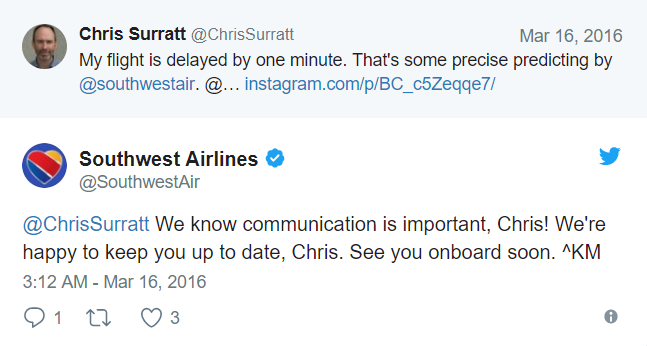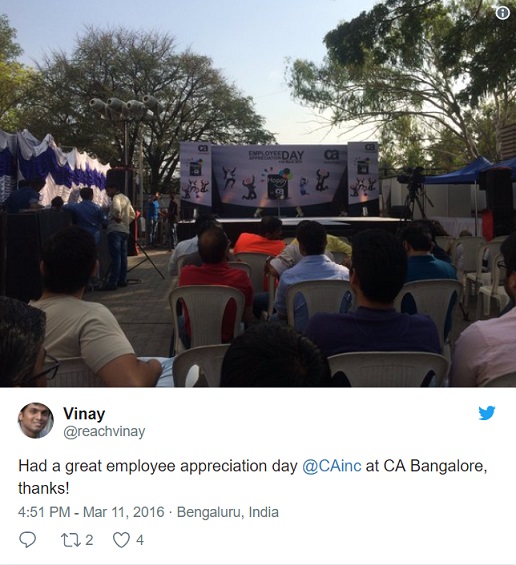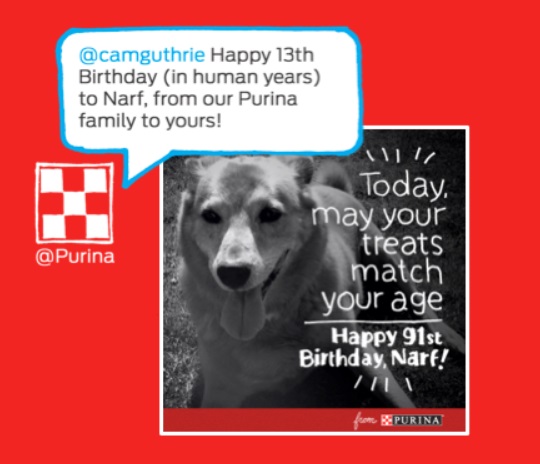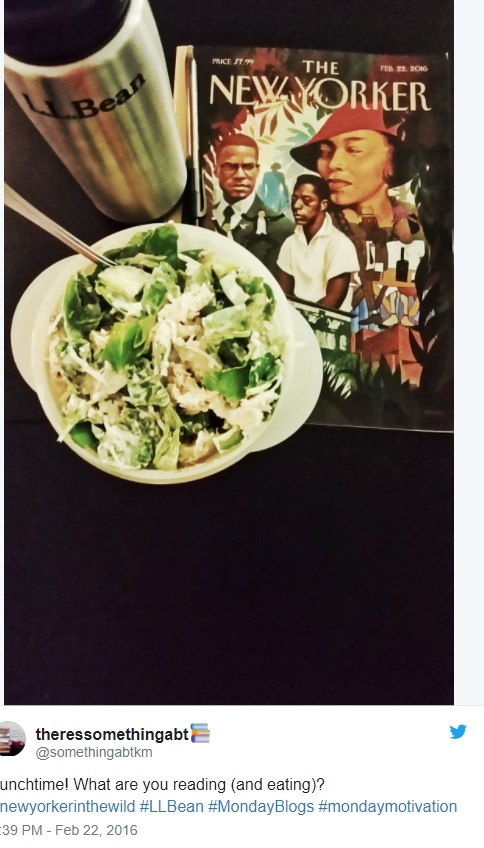Home > Media News >

Source: https://blog.hootsuite.com
By Dara Fontein
Have you ever looked at somebody’s amazing travel photos and felt as if you too could enjoy such joy, if only you had the budget, resources, and time? If you’re a small business owner, this can feel similar to the experience of seeing a huge company’s extremely successful viral marketing campaign. As a smaller business, you may feel as if these mammoth successes are out of your reach, but I’m here to tell you that this simply isn’t the case.
Flashy gestures and fancy budgets can of course add a certain pizzazz to any campaign. But there are core strategies that any business—big or small—can apply to their own marketing efforts. To see the ways big brands are using social media, we took a look at past and present nominees for the Shorty Awards, which recognize the best of social media. As a great wealth of examples showing social media done right, the key strategies of the following big brands can be applied to any small business’ campaigns. As the following shows, solid social media principles can be universally applied—regardless of whether your budget is ‘baller’ or smaller.
Case 1: Southwest Airlines
Core Strategy: Social customer care
Platform(s) used: Twitter, Facebook, Pinterest, YouTube, Instagram
Anyone who’s ever been stranded at the airport, had a flight delayed, or lost their luggage, knows that information is power in these types of frustrating situations. Southwest Airlines—touted as “the most loved airline in social media”—knows this, and therefore counts social media customer service as a key element in their business model. As the first airline worldwide to reach 3 million fans on Facebook, their customers’ dedication is no doubt encouraged by Southwest’s proven commitment to their passengers.
Using a social listening center, Southwest Airlines made hearing directly from their customers, employees, fans, and the media, a priority. As they explain in their case study, “Our Customer Care Team has provided outstanding service throughout weather events and crisis situations, helping our Customers get where they need to go or providing answers to their questions—all via Twitter and Facebook.”

How to apply this strategy
While your small business might not have the same resources available that a large airline like Southwest has, there are many ways you can incorporate social customer care in your strategy. If using a solution like Hootsuite, you can set up a stream dedicated to social listening and easily monitor what people are saying to, and about, your brand. If you see anything that requires your attention (such as a direct question, or someone sharing a negative experience they’ve had with your business, etc.) you can quickly jump in and address these inquiries. This ends up ultimately saving your company time and resources, as the answer you provide is giving information to not just that one individual, but the greater public—saving you from having to separately answer the same question over and over again. For more tips and information on social media customer service.
Case 2: CA Technologies
Core Strategy: Brand advocacy
Platform(s) used: Twitter, Facebook, YouTube, LinkedIn
Many companies concentrate all of their efforts to reaching outside customers and the public, but CA Technologies—one of the largest independent software companies in the world—knows that sometimes your best advocates are your own employees. From this recognition, the company created SocialU, an “internal social media education, training, and enablement program designed to empower employees to be active in social media, both internally and externally.” With this, their employees were given tools to become key carriers of the brand’s voice and message, enabling them to advocate on behalf of CA Technologies.

How to apply this strategy
While this campaign involved over 13,000 employees taking part, your small business can undoubtedly use the power of employee advocacy through social media as a tool yourself. Our guide to creating a social media advocacy program includes the following six steps to help you with your own efforts, whether big or small:
Make workplace culture a priority.
Create social media guidelines and communicate them to all participants.
Educate employees on best practices for chosen social media platforms.
Create an employee advocacy mission.
Appoint employee advocacy leaders.
Track the right metrics to measure the effects of employee advocacy.
If you’re looking for a tool to make your employee advocacy program even more effortless, Hootsuite’s Amplify makes the process easy.
Case 3: Purina
Core Strategy: An authentic brand voice
Platform(s) Used: Twitter
You may feel that big brands always have an advantage over smaller companies, but something that they have to work harder at is building and maintaining an authentic and trustworthy brand voice. While Purina is a leader in the pet industry and one of the most widely recognized pet brands in North America, they found difficulty in seeming personal enough when compared to smaller, more authentic seeming brands. To fix this, Purina launched an “always on” campaign. This campaign used “social media to highlight Purina employees and fans, which are animal loving people. These people have real stories and real connections with their pets.” In showcasing the people behind the brand, and interacting with fans in a much more personable way, Purina saw a 100 times lift in mentions on Twitter, a response rate of 86 percent, over 5,500 personalized Tweets sent, and over 6.5 million personalized impressions.

How to apply this strategy
Seeing the success of Purina’s campaign, there are many ways to build an authentic voice for your brand through social media. Our past blog post on this topic notes the following ways you can highlight your authenticity.
Keep your cool: If your brand isn’t one whose voice aligns with using slang or GIFs, don’t do it. Forcing something is the opposite of keeping your cool. Before you do anything on social, think about whether it fits your core brand identity and overall strategy.
Be egoless: Humanize your brand through being vulnerable, poking good-natured fun at yourself, and being incredibly self-aware. In practicing these main principles, you will undoubtedly help your company be seen as genuine and relatable.
Offer peeks behind-the-scenes: Get ahead of anything being said about your brand or messaging by being as transparent as possible. “ As Neil Patel explains, “Being open about your business is a great way to gain people’s trust and loyalty. By sharing problems you may be facing, or by sharing your financial numbers (whether they are good or bad) you can help build a larger following.”
Case 4: Coca-Cola
Core strategy: Social video
Platforms used: YouTube
With social media video an increasing focus of marketing strategies and communication efforts, Coca-Cola tapped into this popularity to great success. In 2015, the mega brand launched a global campaign to combat prejudice based on personal appearance through a video spread via their social media channels. Coca-Cola invited a group of very physically different people to a completely dark Ramadan Iftar (a breaking of the fast), and filmed the experience. While the lights were off, the participants spoke, conversed, and answered questions, and when the lights finally came on, it was to great surprise, and ended with the text “Labels are for cans, not for people.”
With video an especially poignant method of emitting emotion to an audience, Coca-Cola chose the perfect medium to share their message. It garnered more than 18 million YouTube views, earned over $30 million in advertising and PR value through media exposure, became the second most viral ad worldwide in 2015 via Adweek, and earned a 35 percent engagement rate on Facebook and 33 percent engagement rate on Twitter.
How to apply this strategy
Using YouTube and social video is something that most businesses can do, even if your budget and time doesn’t match that of a company such as Coca-Cola. While big, professional cameras and equipment aren’t easily accessible by all companies, there are numerous ways to take your smartphone shot footage and make it something that adds incredible value to your marketing campaigns. Our post, “How to Fuel Your YouTube Video Marketing,” suggests the following tactics for optimizing your YouTube video efforts:
Make your content visible—through the title, description, and tags
Utilize YouTube Ads—which you only pay for if somebody engages with the ad
Take advantage of YouTube Analytics—to see where you can concentrate your efforts in the future and save time and resources then
Case 5: The New Yorker
Core Strategy: User-generated content
Platforms Used: Facebook, Twitter, Instagram, Tumblr, Google+, Pinterest, Snapchat, LinkedIn
One of the toughest challenges faced by social media marketers is the constant pressure to come up with new and unique content that your audience is going to love. The New Yorker, with their 13.3 million followers, recognized that nobody knows what their audience wants more than their audience themselves. With a goal to extend beyond their brand’s organic reach, The New Yorker is constantly looking to engage with their audience as much as possible. To do this, they realized that finding ways to include their readers’ voices on their social channels solves at least two problems.
Brands are able to increase the amount of unique content (as it’s being provided by their readers), and are able to engage at a higher level with their audience. Speaking to this, The New Yorker explains, “On Instagram, we regularly Regram followers who use #newyorkerinthewild, a popular hashtag that highlights the settings in which our fans read the magazine. On Twitter, we introduced a dedicated hashtag campaign—#myTNY—to foster discussion about readers and staff writers’ favorite New Yorkerstories.”

How to apply this strategy
Running a user-generated campaign is one of the most cost-effective ways of creating content for your social channels, which means it’s perfect for your small business. Our guide, “Content Marketing Ideas for Small Businesses,” offers the following tips for user-generated campaigns:
Encourage media-rich, informative reviews.
Let your customers display the product in the best light with photo reviews.
Repost your customers’ Instagram photos.
If your product is edible, show off use cases for your products with user-generated recipes.
Organize writing contests.
Let your customers show off the best use cases for your product.
Case 6: Starbucks
Core strategy: Using influencers
Platforms used: Instagram, Twitter, Facebook, Vine
When Kim Kardashian credited the LuMee LED-light infused mobile phone case as the secret behind her glowing skin and flawless Instagram selfies, fans flocked to the product, purchasing it in droves. An influencer is a powerful thing for content marketers, and Starbucks recognized and implemented this in their recent Frappuccino Summer of Fun campaign. With Nielsen confirming that “77 percent of people are more likely to buy a product that’s recommended by someone they trust,” Starbucks used this information to drive their campaign.

How to apply this strategy
There are influencers in all industries, so your small business can find these individuals with some simple tips. Our guide, “How to Find and Engage with Social Media Influencers,” recommends the following four steps for creating long-lasting, valuable influencer relationships.
Step 1: Define your social media influencers (through relevance, reach, and resonance)
Step 2: Find your social media influencers (with tools like Klout.com, through individual social networks, search engines, etc.)
Step 3: Engage with social media influencers (through interacting with their content, participating in conversations with them, etc.)
Step 4: Maintain relationships with social media influencers (through keeping track of them via Twitter lists, keeping track of their blogs through Hootsuite Syndicator, etc.)
Case 7: Comedy Central
Core Strategy: Cross-promotion
Platforms used: “Every major social media platform”
As a television series that started out on the web, Broad City had a unique position with an already dedicated web-following. When the show became a hit Comedy Central fan-favorite, the creators knew they had to find a way to keep their audience engaged in between the much-anticipated seasons. To do this, they launched the “Hack Into Broad City” campaign, with a web series allowing anyone to be a “fly on the wall during the girls’ infamous video chats.”
Each episode was shared not only to YouTube, Facebook, Snapchat, and the Comedy Central website, but also by partnered press outlets like Entertainment Weekly, E! Online, and Refinery29. The six episodes racked up 3.2 million views across all platforms, with the special holiday episodes trending on Facebook the day they were released.

How to apply this strategy
Sharing your content across multiple social media and web platforms is a great way for small businesses to make the most of their online presence. If you have content that will work for more than one of your channels, post it on each network as a way of reaching as many audience members as possible. As you may not have as much time as a big agency or brand, you can use a tool such as Hootsuite to streamline the process of posting to multiple channels at once, and monitoring each channel. It’s also important to make sure that your website has easily accessible links to all of the social networks you are active on, so that your audience can find you on the channels that work best for them, too. Cross-promotion is a strategy that isn’t reserved for big brands only, and is something that your small business can use to grow and nurture your customer and audience base.
While internationally recognized campaigns from huge businesses might intimidate and overwhelm smaller businesses, the core strategies are ones that can be applied universally.
Top Stories










